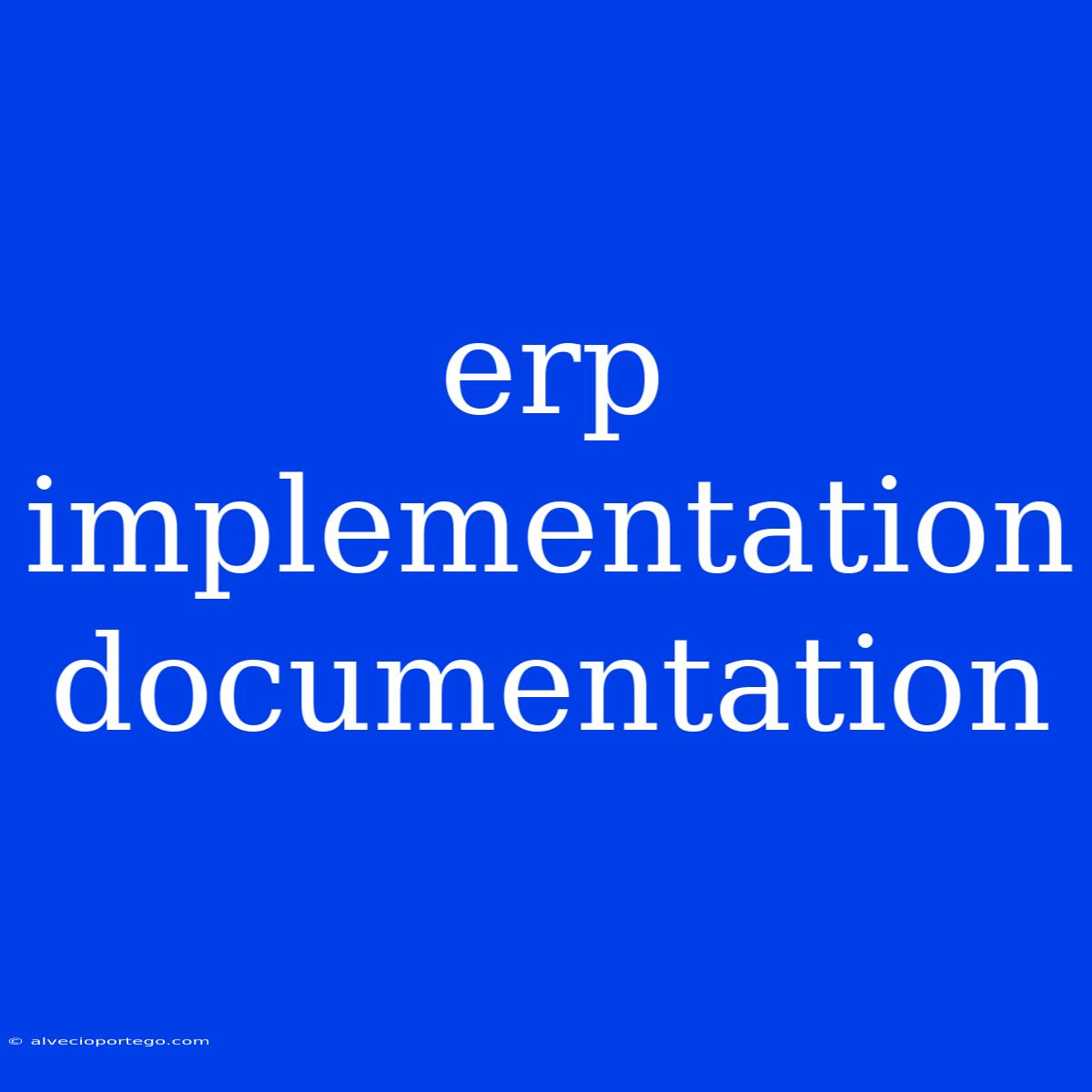ERP Implementation Documentation: A Guide to Success
Implementing an Enterprise Resource Planning (ERP) system is a significant undertaking for any organization. It involves extensive changes to processes, systems, and data, and the success of the implementation depends heavily on effective documentation. This article will delve into the importance of ERP implementation documentation, its various types, and essential best practices for creating and managing this crucial resource.
Why is ERP Implementation Documentation Essential?
ERP implementation documentation serves as the backbone of the entire project, offering a comprehensive record of every aspect, from initial planning to post-implementation support. Here's why it's indispensable:
- Improved Communication: Documentation facilitates clear and consistent communication between stakeholders, including project teams, management, and end-users.
- Knowledge Transfer: It acts as a valuable knowledge repository for current and future team members, ensuring continuity and reducing reliance on individual expertise.
- Risk Mitigation: Documentation helps identify potential risks and issues early on, allowing for proactive mitigation strategies.
- Smooth Transition: Detailed documentation aids in transitioning to the new ERP system efficiently, minimizing disruption to daily operations.
- Enhanced Training: Documentation provides a structured framework for training end-users, ensuring they can effectively utilize the system.
- Improved Compliance: Documentation helps organizations comply with relevant regulations and standards.
- Efficient Maintenance: Well-maintained documentation simplifies troubleshooting and future system updates.
Types of ERP Implementation Documentation
There are various types of documentation required throughout the ERP implementation lifecycle. Some key types include:
1. Project Plan: This document outlines the project scope, objectives, timelines, resources, and milestones.
2. Requirements Document: This document details the organization's specific needs and expectations from the ERP system.
3. Functional Specifications: These documents describe the functionalities of each module and how they will be integrated into the existing system.
4. Technical Specifications: This documentation covers technical details like hardware and software requirements, database design, and network infrastructure.
5. User Guides: These documents provide comprehensive instructions for end-users on how to access and utilize the ERP system.
6. Training Materials: Includes training manuals, presentations, and other materials used for user training.
7. Change Management Plan: Outlines the process for managing changes to the system, including updates, upgrades, and bug fixes.
8. Support Documents: Covers troubleshooting procedures, FAQs, and contact information for support personnel.
9. Post-Implementation Review Documents: Document the outcome of the implementation project, including lessons learned and recommendations for future projects.
Best Practices for ERP Implementation Documentation
- Planning is Key: Develop a comprehensive documentation plan outlining the types, format, and ownership of each document.
- Focus on Clarity and Simplicity: Use clear and concise language, avoiding technical jargon.
- Version Control: Implement a version control system to track changes and ensure everyone is working with the latest versions.
- User-Friendly Format: Make documents easy to navigate, with clear headings, subheadings, and visual aids.
- Regular Updates: Ensure documentation is kept up-to-date throughout the project lifecycle.
- Utilize Templates: Consider using templates for standard documents like project plans, user guides, and training materials.
- Involve Stakeholders: Ensure all stakeholders, including project team members, end-users, and management, are involved in the documentation process.
- Documentation as a Continuous Process: Treat documentation as an ongoing process that evolves as the project progresses.
Conclusion
Effective ERP implementation documentation is crucial for the success of any ERP project. By following best practices, organizations can create and maintain comprehensive documentation that facilitates seamless communication, knowledge sharing, risk mitigation, and a smooth transition to the new ERP system. This investment in documentation will yield significant benefits in the long run, ensuring a successful implementation and a future-proof system.

